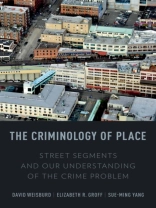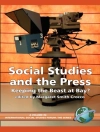The study of crime has focused primarily on why particular people commit crime or why specific communities have higher crime levels than others. In The Criminology of Place, David Weisburd, Elizabeth Groff, and Sue-Ming Yang present a new and different way of looking at the crime problem by examining why specific streets in a city have specific crime trends over time. Based on a 16-year longitudinal study of crime in Seattle, Washington, the book focuses our attention on small units of geographic analysis-micro communities, defined as street segments. Half of all Seattle crime each year occurs on just 5-6 percent of the city’s street segments, yet these crime hot spots are not concentrated in a single neighborhood and street by street variability is significant. Weisburd, Groff, and Yang set out to explain why. The Criminology of Place shows how much essential information about crime is inevitably lost when we focus on larger units like neighborhoods or communities. Reorienting the study of crime by focusing on small units of geography, the authors identify a large group of possible crime risk and protective factors for street segments and an array of interventions that could be implemented to address them. The Criminology of Place is a groundbreaking book that radically alters traditional thinking about the crime problem and what we should do about it.
Elizabeth R. Groff & David Weisburd
Criminology of Place [PDF ebook]
Street Segments and Our Understanding of the Crime Problem
Criminology of Place [PDF ebook]
Street Segments and Our Understanding of the Crime Problem
यह ईबुक खरीदें और 1 और मुफ़्त पाएं!
भाषा अंग्रेज़ी ● स्वरूप PDF ● ISBN 9780199709106 ● प्रकाशक Oxford University Press ● प्रकाशित 2012 ● डाउनलोड करने योग्य 6 बार ● मुद्रा EUR ● आईडी 2523801 ● कॉपी सुरक्षा Adobe DRM
एक DRM सक्षम ईबुक रीडर की आवश्यकता है












